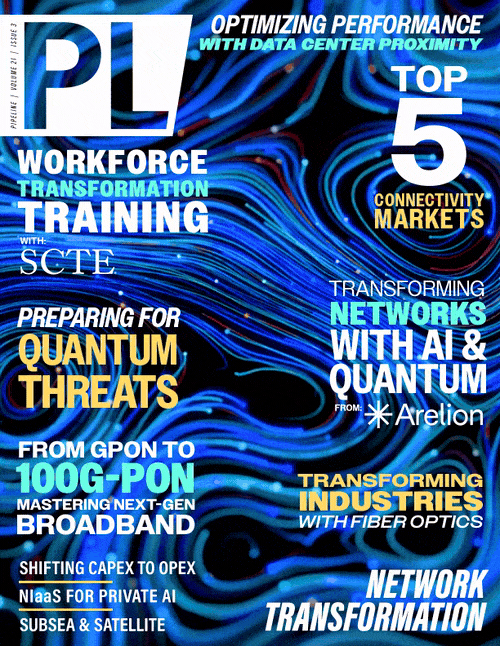Network Transformation: Optimizing Data Center Locations and Carrier Relations for Enhanced Performance
By: Carlie Shooner
.jpg) As the season of annual resolutions kicks off, it’s time to evaluate and set new goals for many things — among them, perhaps your network configuration. With 2025 in full swing, we predict the
digital landscape will continue to ramp up in terms of innovation, new technologies, and demand. Though your network may be performing well at the moment, what works now, or even exceeds
expectations, may not work as the landscape shifts and the industry evolves. If the goals you have set for your enterprise are centered around growth, network transformation should be top of mind
to be able to achieve that growth as technology rapidly evolves.
As the season of annual resolutions kicks off, it’s time to evaluate and set new goals for many things — among them, perhaps your network configuration. With 2025 in full swing, we predict the
digital landscape will continue to ramp up in terms of innovation, new technologies, and demand. Though your network may be performing well at the moment, what works now, or even exceeds
expectations, may not work as the landscape shifts and the industry evolves. If the goals you have set for your enterprise are centered around growth, network transformation should be top of mind
to be able to achieve that growth as technology rapidly evolves.
More than simply upgrading hardware, transforming your network involves a fundamental overhaul of network architecture, protocols and technologies, with the goal of creating a more agile, scalable and secure network that easily adapts to support modern applications and services. Examples may include the incorporation of enhanced security protocols, the integration of cloud or 5G technologies and/or the incorporation of software-defined networking. Rather than maintaining the status quo and catching up to changes in the landscape, continuous evaluation of your network performance and transformation initiatives can make you a pioneer in the industry, staying ahead of your competitors and prepared to handle challenges that may not even exist right now.
Network transformation is not only critical for enhancing your overall performance on a day-to-day basis, but also essential to ensure that you can prevent disruptions. Two key aspects will determine the success of your network transformation initiative: strategic data center placement and the cultivation of strong carrier relationships. Concentrating on these areas enables you to significantly improve your network efficiency, reduce costs, and deliver superior services.
Strategic Placement of Data Centers
Strategically placing data centers plays a crucial role in network transformation. Carefully selecting locations can significantly enhance network efficiency, reduce latency, and improve overall performance. Key considerations for optimal data center placement include their proximity to end users, network coverage/reach and geographical redundancy.
To achieve optimal proximity, consider analyzing user demographics and geographical distribution, identifying areas with high user concentration and evaluating network traffic patterns and data flow. By keeping the location of user clusters in mind when deciding on data center placement, you can minimize the physical distance data needs to travel, resulting in faster response times. Beyond that, business continuity and disaster recovery (BC/DR) must be considered when it comes to physical placement to ensure that users affected by weather events or other regional phenomena do not experience a disruption in service.
In addition, locating a data center in less populated areas should be taken into account, but only if it makes sense with the factors listed above. Distributing data centers across different geographical regions enhances your BC/DR capabilities by helping mitigate the risk of service disruptions due to natural disasters, power outages or man-made issues (like backhoe-induced fiber failure, or BIFF). Other benefits of geographical redundancy include improved fault tolerance and system reliability, enhanced data backup and recovery options, compliance with data sovereignty regulations, and load balancing capabilities for optimized performance.
Strategically placing data centers in diverse locations is a key component in creating a robust and resilient network infrastructure. By mirroring critical data across multiple sites, this may ensure that you can keep your centers up and running in case of a disaster, helping you maintain your SLAs with your customers.
Factors to consider include:
- Existing network infrastructure in the area.
- Availability of high-speed internet connections.
- Presence of multiple internet service providers (ISPs) for redundancy.
- Potential for future network expansion.


















